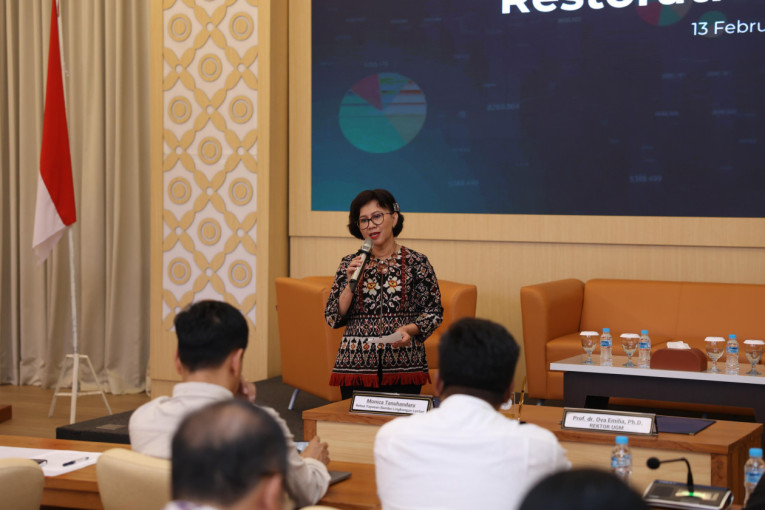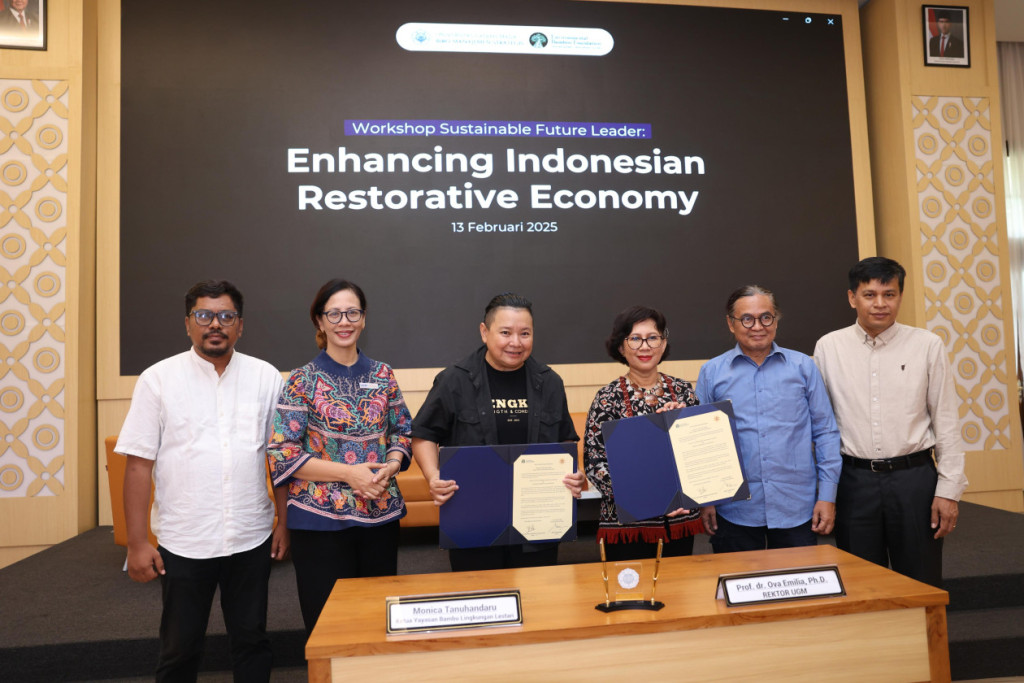
The agenda of reducing carbon emissions has become a strategic step in mitigating climate change’s impacts.
Various initiatives are being undertaken, including using bamboo as an industrial raw material. Bamboo can absorb 17 tons of carbon per hectare annually and produce 35% more oxygen than trees of the same size.
This potential is seen as highly promising for industrial use.
UGM Rector Professor Ova Emilia stated that Indonesia has a significant opportunity to drive the Nationally Determined Contribution (NDC) if the potential of bamboo is wisely utilized.
“Research shows that bamboo has a high carbon absorption capacity, ranging from 16 to 128 tons of carbon per hectare. If well-managed, it could contribute to a 35% reduction in emissions,” Professor Emilia explained during the “Sustainable Future Leader Workshop: Enhancing Indonesian Restorative Economy.”
The event, initiated by UGM’s Bureau of Strategic Management and the Yayasan Bambu Lingkungan Lestari, was held on Thursday (Feb. 13) in the Multimedia Room of UGM’s Central Office.
Professor Emilia pointed out that with such significant carbon absorption potential, bamboo is now highly sought after in the global market, with a production value of USD 3 billion in Asia-Pacific countries.
She added that innovation and technology are needed to encourage bamboo production if it is to be used as an export commodity.
Presidential economic advisor Professor Bambang Brodjonegoro discussed how climate change affects nearly all sectors, especially food security.
The impacts of climate change, such as droughts, floods, and unpredictable weather, have reduced the productivity of staple foods. It is even estimated that by 2050, 12 million people worldwide could face hunger.
“We hope there will be no efforts to deny climate change. We have had a food security agenda for a long time, but with current conditions, there is still a potential food crisis,” Professor Brodjonegoro remarked.
He also highlighted the United States plan to officially withdraw from the Paris Agreement in 2026, urging countries to remain committed to addressing the climate crisis amid the current socio-political conditions.
Professor Brodjonegoro further stated that more climate actions across various sectors are needed to achieve the 2030 NDC target.
He believes bamboo could serve as one alternative raw material for carbon absorption. However, he cautioned that this potential does not necessarily make bamboo the primary commodity driving the economy and industry.
“Efforts to cultivate other commodities through innovation and technology are still needed to maintain a balance between production and consumption of natural resources,” he added.

Monica Tanuhandaru, chairperson of Yayasan Bambu Lingkungan Lestari (YBLL), mentioned that the organization is currently developing agroecological bamboo cultivation in villages, which is considered one of the most appropriate restorative economic models for Indonesia.
In addition to Indonesia’s rich bamboo resources—176 species, 105 of which are endemic—bamboo also has strong cultural ties with local communities.
“Bamboo is very effective in addressing environmental issues such as critical lands and water source degradation,” she stated.
Tanuhandaru explained that a single bamboo clump can store up to 3,600 liters of water every rainy season, equivalent to 189 gallons of mineral water.
Moreover, one bamboo clump can absorb 3.3 tons of CO2 equivalent carbon per year, stabilize sloping land, and grow on critical land.
“Bamboo can also be harvested sustainably without diminishing its environmental benefits. The global industry is now looking at bamboo as an eco-friendly, low-carbon, and sustainable material. Indonesia has the potential to become a key player in this future industry,” she said.
For the past four years, Tanuhandaru continued, YBLL has been developing Bamboo Agroecology with communities in 287 villages across East Nusa Tenggara (NTT), Bali, East Java, and West Kalimantan.
The program has produced 3.6 million bamboo seedlings, of which 2.2 million were planted in critical lands, water source areas, and customary forests. One Bamboo Joint Production House (RPB) also operates and produces modern bamboo products, including laminated bamboo.
Author: Tasya
Editor: Gusti Grehenson
Post-editor: Afifudin Baliya
Photographer: Firsto

